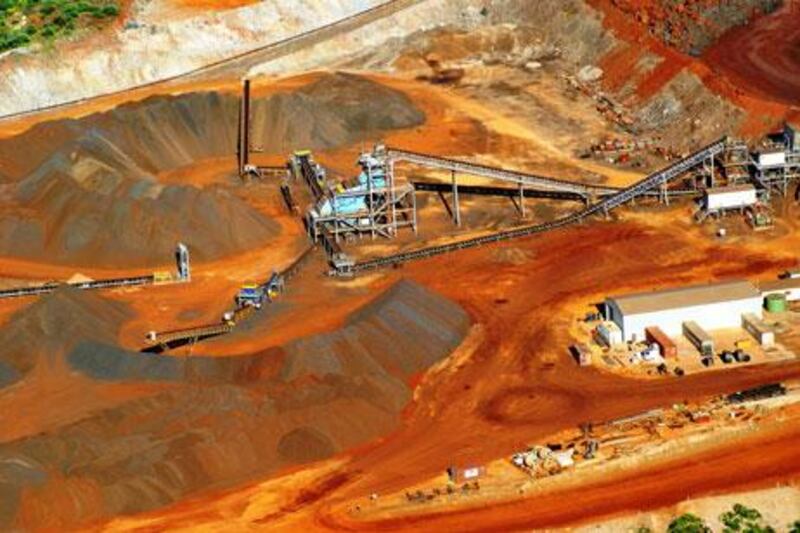Ten months ago Nathan Tinkler, a mining entrepreneur, paid the Rio Tinto subsidiary Coal & Allied US$480 million (Dh1.76 billion) for ownership of the undeveloped Maules Creek coal project in the Gunnedah Basin in central New South Wales, Australia.
Mr Tinkler later sold off a 15 per cent share in the project to Itochu, a Japanese trading house, for $345m - revaluing the project at $2.29bn, a near fivefold increase on its acquisition cost. Mr Tinkler now owns 35 per cent of Aston Resources, a company valued at $1.7bn. It is a deal Coal & Allied would probably prefer to forget.
While Mr Tinkler has proved to be a genius in trading mining assets, he is part of a bigger story. Tiny mining companies have been the best-performing Australian shares during the past 12 months. The country's economy, linked inextricably to mineral wealth, has been feeding China's insatiable appetite for metals and commodities for nearly a decade.
Look down the list of the top 10 shares during the past year and most are metals miners with some oil shares. There is no BHP or Rio Tinto, no Newcrest Mining or Woodside Petroleum - there are none of the big, well-known resources names that make up the bulk of Australians' investment portfolios.
Every single top performer is a small, relatively unknown mining or oil company.
Who has heard of Aurora Oil & Gas (up 576 per cent to end of November), Intrepid Mines (up 565 per cent), Ampella Mining (up 391 per cent) or Regis Resources (up 217 per cent)?
Within the wider investment community, these companies are being ignored as speculative and volatile, not worthy of thorough research. Anything outside the top 200 shares by capitalisation simply does not figure on investment bank analysts' radars.
Small mining companies have long been ignored, and they are also aware that banks and financiers are reluctant to lend to them, which is one reason why Australia has such a high number of small listed exploration companies, hungry for capital.
In the wider world, they cannot be ignored. Silver is now at a $30 high, copper is at $4 a pound, oil is looking to spill over $100 and coking coal is trading strongly. There are no signs of a commodities let-up in China, nor in many of the other rapidly growing emerging countries.
JP Morgan has just launched an exchange-traded fund (ETF) in London and New York that will hold large quantities of physical copper.
ETFs are widely viewed as the fastest-growing investment vehicles in world markets, and a copper-backed ETF, capable of locking up copper supplies that would normally be earmarked for production, is likely to have a substantial effect on the copper price. ETFs are flexible investment vehicles with the ability to provide instant exchange-traded liquidity at a low cost. Enter the tiddlers, who are finding gold and copper deposits where many fear to tread both within and outside Australia.
There are companies such as the gold and base metal miner Sandfire Resources, highly rated not just for its exploration successes, but for its management team. Into this clique can be added Regis Resources (gold and nickel), Avoca Resources (gold), Kingsgate (gold) and Mount Gibson (iron ore).
"These companies have assets which have been overlooked by the majors and many of them have had genuine exploration success in their own right," says Jason Chesters, a small resources analyst at Patersons Securities.
If properly managed, they are tomorrow's well-placed mid-cap stocks, but even Mr Chesters cautions they should make up only a proportion of an investor's portfolio.
"If you believe in the commodities 'super-cycle' lasting another decade, then you cannot avoid these shares," he says. "But like commodities underlying them, they are very volatile. It's always worth doing the research."





